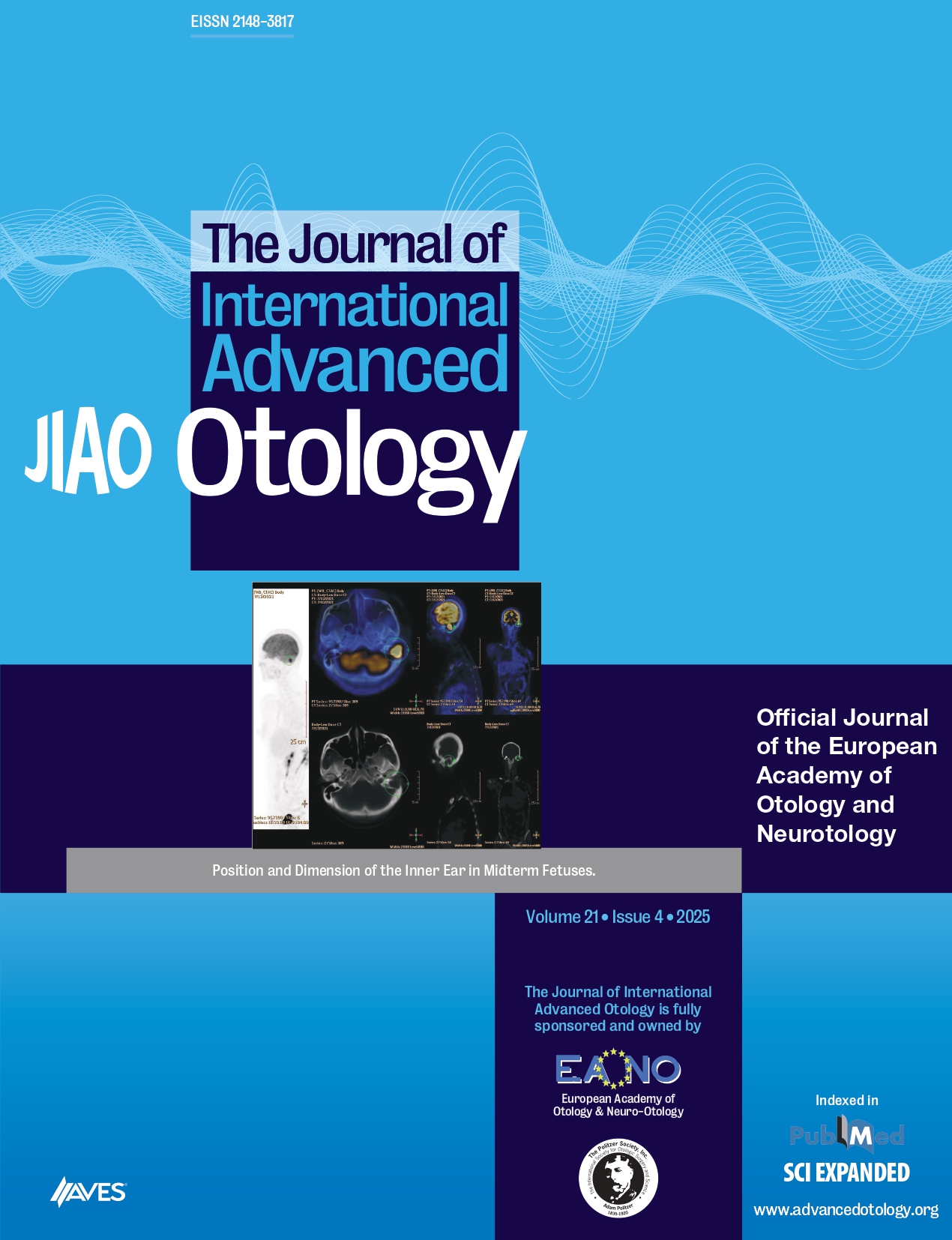OBJECTIVES: To assess the validity and test–retest reliability of the Danish Stapesplasty Outcome Test 25 (SPOT-25) version.
MATERIALS and METHODS: The German SPOT-25 questionnaire—consisting of 25 questions within the subscores “hearing function,” “tinnitus,” “mental condition,” “social restrictions,” and “general quality of life,” found to be significant in terms of health-related quality of life in patients with otosclerosis—was translated into Danish in a three-step process according to the guidelines provided by the International Collegium of Rehabilitative Audiology. In total, 35 patients with otosclerosis were included as cases and 35 individuals without ear-problems as controls. The SPOT-25 questionnaire was filled out once by the patients and twice by the controls. Pure tone average (0.5, 1, 2, and 3 kHz) (PTA4) was obtained for cases.
RESULTS: The SPOT-25 clearly discriminated the individuals with otosclerosis from con-trols within all subscores (p<0.001). The internal consistency within the subscores was good to excellent with Cronbach alpha values of 0.85–0.95. The reproducibility (estimated by the control group) was moderate to high, with an intraclass correlation of 0.58-0.94 within the subscores. Although the SPOT-25 subscores within “hearing” and “social restrictions” showed a moderate correlation with PTA4 (Pearson correlation coefficient 0.51 and 0.42, respectively), this was not the case for the subscores regarding “tinnitus,” “mental condition,” and the “general.”
CONCLUSION: The SPOT-25 questionnaire can be used as a valuable complement to audiometric data in patients with otosclerosis, especially for estimating factors such as tinnitus and “mental condition,” which do not correlate with the audiometric data.
Cite this article as: Hildebrandt ME, Larsen KD, Glad H, Djurhuus BD. Validity and Test–Retest Reliability of the translated Stapesplasty Outcome Test 25 for Measurement of Disease-Specific Quality of Life in Danish Patients with Otosclerosis. J Int Adv Otol 2020; 16(3): 358-61.



.png)
.png)